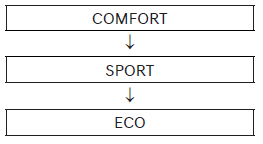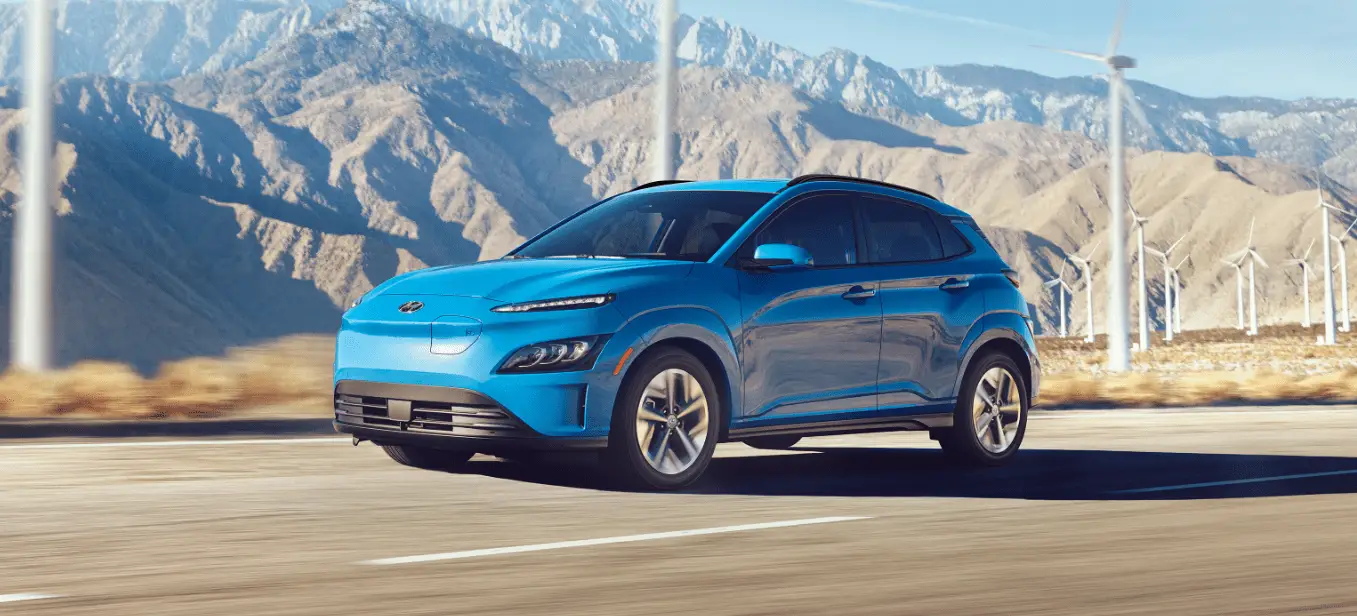Hyundai Kona-EV 2023 Drive Mode Integrated Control System
Modern car technology is always changing. The 2023 Hyundai Kona-EV’s Drive Mode Integrated Control System combines new ideas with flexibility, giving the car a solution that can be used in a variety of situations and suits the needs of all its drivers. This advanced feature gives Kona-EV users the power to fine-tune their car’s performance by offering a range of driving modes, from the eco-friendly and efficient Eco mode to the thrilling and responsive Sport mode, as well as the option to make changes. The Kona-EV adjusts its performance to get the best fuel economy, power, or a mix of the two by smartly changing the throttle response, steering feel, and other important factors. This makes sure that you can drive with confidence and satisfaction on a variety of surfaces and in a variety of situations. We’re starting a full investigation of this system, which opens up the possibility of better comfort, efficiency, and driving enjoyment. This shows Hyundai’s dedication to providing a flexible and quick driving solution for a road that is always changing.
2023 Hyundai Elantra Specs, Price, Features, Milage (Brochure)
Drive Mode Integrated Control System

The drive mode may be selected according to the driver’s preference or road condition.
- The mode changes, as below, whenever the DRIVE MODE button is pressed.

- Press and hold the DRIVE MODE button to select ECO+ mode.
The system resets to be in COMFORT mode (except if it is in ECO mode), when the vehicle is restarted.
When the vehicle is restarted, Drive Mode is set to ECO by default.
Information
If there is a problem with the instrument cluster, the drive mode will be in COMFORT mode and may not change to SPORT mode.
The mode changes, as below, whenever the DRIVE MODE button is pressed.

When COMFORT mode is selected, it is not displayed on the instrument cluster.
ECO mode (if equipped)

When the Drive Mode is set to ECO mode, the motor and transmission control logic are changed to maximize energy efficiency.
- When the ECO mode is selected by pressing the DRIVE MODE button, the ECO indicator will illuminate.
- If the vehicle is set to ECO mode, when the vehicle is turned OFF and restarted, the Drive Mode setting will remain in ECO mode.
- Whenever the vehicle is restarted, the Drive Mode will change to ECO mode.
Information
Electric energy efficiency depends on the driver’s driving habits and road conditions.
When ECO mode is activated:
- The acceleration response may be slightly reduced as the accelerator pedal is depressed moderately.
- The air conditioner’s performance may be limited.
- The shift pattern of the reduction gear may change.
The above situations are normal conditions when ECO mode is activated, to improve electric energy efficiency.
| Drive mode | COMFORT | SPORT | ECO | ECO+ *1 |
|
Feature |
Normal driving mode | Sporty driving mode | Optimal for eco-driving | Ultra power-saving driving mode |
| Button activation | Press | Press | Press | Press and hold |
| The indicator on the cluster |
|
 |
 |
 |
| Air conditioner/ heater system control | COMFORT (ECO/ COMFORT) *2 | COMFORT (ECO/ COMFORT) *2 |
ECO |
Off |
| Regenerative braking level | 1 (1~3) *2 | 1 (1~3) *2 | 2 (1~3) *2 | 2 |
- Change to ECO+ mode
- Distance to empty may not change when the air conditioner/heater system is off. However, actual distance may be extended.
- Air conditioner/heater system turns off (except the defroster) but you may turn it on if necessary.
- When the drive mode is switched from the ECO+ mode to a different mode, it is changed to air conditioner/heater operation status of the ECO mode.
- It is possible to set the driving condition for each drive mode (except the ECO+ mode) at the drive mode setting in the Audio and AVN system.
2023 Hyundai Elantra Specs, Price, Features, Milage (Brochure)
SPECIAL DRIVING CONDITIONS
Hazardous Driving Conditions
When hazardous driving elements are encountered such as water, snow, ice, mud and sand, take the following precautions:
- Drive cautiously and maintain a longer braking distance.
- Avoid abrupt braking or steering.
- When your vehicle is stuck in snow, mud, or sand, accelerate slowly to avoid unnecessary wheel spinning.
- Put sand, rock salt, tire chains or other non-slip materials under the wheels to provide additional traction while being stuck in ice, snow, or mud.
Rocking the Vehicle
If it is necessary to rock the vehicle to free it from snow, sand, or mud, first turn the steering wheel right and left to clear the area around your front wheels. Then, shift back and forth between R (Reverse) and forward gear. Try to avoid spinning the wheels, and do not race the vehicle.
To prevent reduction gear wear, wait until the wheels stop spinning before shifting gears. Release the accelerator pedal while shifting, and press lightly on the accelerator pedal while the reduction gear wear is in gear. Slowly spinning the wheels in forward and reverse directions causes a rocking motion that may free the vehicle.
WARNING
If the vehicle is stuck and excessive wheel spin occurs, the temperature in the tires can increase very quickly. If the tires become damaged, a tire blow out or tire explosion can occur. This condition is dangerous – you and others may be injured. Do not attempt this procedure if people or objects are anywhere near the vehicle.
If you attempt to free the vehicle, the vehicle can overheat quickly, possibly causing a motor compartment fire or other damage. Try to avoid spinning the wheels as much as possible to prevent overheating of either the tires or the vehicle. DO NOT allow the vehicle to spin the wheels above 35 mph (56 km/h).
Information
The ESC system must be turned OFF before rocking the vehicle.
NOTICE
If you are still stuck after rocking the vehicle a few times, have the vehicle pulled out by a tow vehicle to avoid vehicle overheating, possible damage to the reduction gear, and tire damage. See “Towing” in chapter 8.
Smooth Cornering
Avoid braking or gear changing in corners, especially when roads are wet. Ideally, corners should always be taken under gentle acceleration.
Driving at Night
Night driving presents more hazards than driving in the daylight. Here are some important tips to remember:
- Slow down and keep more distance between you and other vehicles, as it may be more difficult to see at night, especially in areas where there may not be any street lights.
- Adjust your mirrors to reduce the glare from other driver’s headlights.
- Keep your headlights clean and properly aimed. Dirty or improperly aimed headlights will make it much more difficult to see at night.
- Avoid staring directly at the headlights of oncoming vehicles. You could be temporarily blinded, and it will take several seconds for your eyes to readjust to the darkness.
Driving in the Rain
Rain and wet roads can make driving dangerous. Here are a few things to consider when driving in the rain or on slick pavement:
- Slow down and allow extra following distance. Heavy rainfall makes it harder to see and increases the distance needed to stop your vehicle.
- Turn OFF your Cruise Control. (if equipped)
- Replace your windshield wiper blades when they show signs of streaking or missing areas on the windshield.
- Be sure your tires have enough tread. If your tires do not have enough tread, making a quick stop on wet pavement can cause a skid and possibly lead to an accident. See “Tire replacement” in chapter 9.
- Turn on your headlights to make it easier for others to see you.
- Driving too fast through large puddles can affect your brakes. If you must go through puddles, try to drive through them slowly.
- If you believe your brakes may be wet, apply them lightly while driving until normal braking operation returns.
Hydroplaning
If the road is wet enough and you are going fast enough, your vehicle may have little or no contact with the road surface and actually ride on the water. The best advice is SLOW DOWN when the road is wet. The risk of hydroplaning increases as the depth of tire tread decreases, refer to “Tire replacement” in chapter 9.
Driving In Flooded Areas
Avoid driving through flooded areas unless you are sure the water is no higher than the bottom of the wheel hub. Drive through any water slowly. Allow adequate stopping distance because brake performance may be reduced. After driving through water, dry the brakes by gently applying them several times while the vehicle is moving slowly.
Highway Driving
Tires
Adjust the tire inflation, as specified. Underinflation may overheat or damage the tires.
Do not install worn-out or damaged tires, which may reduce traction or fail the braking operation.
Information
Never over-inflate your tires above the maximum inflation pressure, as specified on your tires.
Coolant and high voltage battery Be sure to check both the coolant level and the high voltage battery level before driving.
Reducing the Risk of a Rollover
Your multi-purpose passenger vehicle is defined as a Sports Utility Vehicle (SUV). SUVs have higher ground clearance and a narrower track to make them capable of performing in a wide variety of off-road applications. The specific design characteristics give them a higher center of gravity than ordinary vehicles making them more likely to roll over if you make abrupt turns. Utility vehicles have a significantly higher rollover rate than other types of vehicles. Due to this risk, drivers and passengers are strongly recommended to buckle their seat belts. In a rollover crash, an unbelted person is significantly more likely to die than a person wearing a seat belt.
There are steps that a driver can make to reduce the risk of a rollover. If at all possible, avoid sharp turns or abrupt manoeuvres, do not load your vehicle with heavy cargo on the roof, and never modify your vehicle in any way.
WARNING
Utility vehicles have a significantly higher rollover rate than other types of vehicles. To prevent rollovers or loss of control:
- Take corners at slower speeds than you would with a passenger vehicle.
- Avoid sharp turns and abrupt manoeuvres.
- Do not modify your vehicle in any way that you would raise the center of gravity.
- Keep tires properly inflated.
- Do not carry heavy cargo on the roof.
WARNING
In a rollover crash, an unbelted person is significantly more likely to die than a person wearing a seat belt. Make sure all passengers are wearing their seat belts.
FAQ
The Drive Mode Integrated Control System is a feature that allows the driver to select different driving modes to tailor the vehicle’s performance to different driving conditions and preferences.
The Kona-EV often offers multiple driving modes, including Normal, Eco, Sport, and sometimes additional modes like Comfort or Custom, allowing the driver to choose the mode that best suits their needs.
The Normal mode provides a balanced driving experience, offering a blend of performance and efficiency suitable for everyday driving conditions.
The Eco mode is designed to optimize fuel efficiency and energy conservation. It may limit power output and adjust various vehicle settings to save energy and reduce emissions.
Sport mode typically enhances the Kona-EV’s performance by increasing throttle response, sharpening steering, and adjusting other parameters to deliver a more spirited driving experience.
Depending on the model, the Custom mode allows drivers to customize specific vehicle settings, such as steering feel, throttle response, and regenerative braking, to match their preferences.
Some Kona-EV models may offer specialized driving modes for specific conditions, such as snow or off-road driving, which adapt the vehicle’s settings to enhance performance and control.
To select a driving mode, drivers typically use a control interface, which may involve a button, dial, or touchscreen, depending on the vehicle’s design.
Many Kona-EV models provide visual and/or audible feedback when switching between driving modes to confirm the selection.
In most cases, you can switch between driving modes while driving, although some modes may have restrictions depending on the vehicle’s speed and conditions.
The Drive Mode Integrated Control System adjusts various vehicle parameters, such as throttle response, transmission behavior, and sometimes traction control, to optimize performance and efficiency for different driving conditions.
While driving mode selection is often a matter of personal preference, it’s generally recommended to use Eco mode for maximum efficiency in city driving and Normal or Sport modes for highway driving or more spirited driving.
The Drive Mode Integrated Control System enhances driver comfort and satisfaction by allowing them to tailor the vehicle’s performance to their preferences and the driving conditions, whether they prioritize efficiency, performance, or a balance of both.
Yes, selecting different driving modes can impact the Kona-EV’s electric range. Eco mode, for example, may help maximize range by optimizing energy use, while Sport mode may reduce range due to increased power consumption.
Yes, the owner’s manual for the Kona-EV typically provides comprehensive information about the Drive Mode Integrated Control System, including mode descriptions and recommendations for use in various driving conditions.
Useful Link
View Full User Guide: Hyundai Kona-EV 2023 User Guide
Download Manuals: https://owners.hyundaiusa.com/us/en/resources/manuals-warranties.html
2023 Hyundai Elantra Specs, Price, Features, Milage (Brochure)


